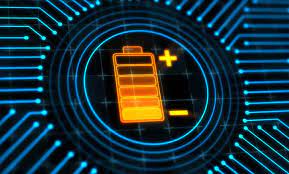Dr Greg Brittles’ eyes gleam with excitement when he explains the project he is working on. Learn more…..
The following written content by Ben Morris

Dr Greg Brittles’ eyes gleam with excitement when he explains the project he is working on.
“It’s every engineer’s dream really, to have a project that’s technically challenging, which requires you to develop new technology and solutions to hard problems, but that are also simultaneously important for the world to have.”
Since finishing his research at Oxford University five years ago, he has been working for Tokamak Energy, a UK start-up that has plans to build a fusion reactor.
Fusion is the reaction that powers the Sun and the stars. If that power could be harnessed on Earth it would provide a plentiful source of energy, from only a tiny amount of fuel and producing no carbon dioxide. What’s not to love?
The principle is easy enough to understand. Take hydrogen atoms, add enough heat and pressure and they will fuse together to form helium. During that process some of the hydrogen mass is transformed into heat, which you can use to make electricity.
The catch is that to make fusion happen here on Earth, you have to heat hydrogen isotopes to hundreds of millions of degrees, until they become so energetic they break apart into a whirling state of matter called plasma.
The challenge has always been to contain that plasma. Stars do it with gravity, but on Earth the most common method is to use powerful magnetic fields to keep the plasma confined.
Much of the engineering challenge has come down to building magnets. They have to be powerful enough to contain an insanely hot, whirling mass of matter, but not use so much electricity that your reactor uses more power than it generates.
Later this year Dr Bob Mumgaard and his team at Commonwealth Fusion Systems (CFS) will test a ground-breaking magnet that they say can make that leap forward.
Weighing 10 tonnes, the D-shaped magnet is big enough for a person to step through. Around 300km of a very special electromagnetic tape is wound into that D-shape.
The tape itself is a feat of engineering that has taken decades to develop. Thin layers of superconducting rare-earth barium copper oxide (ReBCO) are deposited on a metal tape. When cooled that bundle of tape can conduct electricity extremely efficiently, which is essential as 40,000 amps will pass through it, enough electricity to power a small town.
When the fusion industry says cooled it means the tape is chilled to minus 253C, which might sound absurdly cold to you, but in the world of superconducting materials is actually rather warm. Read more from Yahoo!





